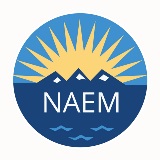External Sustainability Reporting is Increasingly About Quality, Not Quantity

Fielded in conjunction with NAEM's 'Metrics and Materiality' conference in May, the survey of 45 companies revealed that 58 percent of respondents have either evaluated their EHS or sustainability in terms of the material risks to the company or are in the process of doing so.
Marcus Krembs, Sr. HSE Specialist at Newfield Exploration Co., who helped present the research findings, said the shift toward materiality among companies aligns with the evolution of external reporting protocols.
"What's been happening is largely driven by the reporting standard-setting organizations," he said. "They've refined the process to really try to key in on those topics that are material to the business, the investment community or the company's key stakeholders. It's quality not quantity these days."
Another explanation for the relatively broad adoption of this practice among survey respondents, he said, may be that 'materiality' is simply a new way to describe existing practices.
"I'm pretty confident that the long-term reporters and those who had the existing sustainability initiatives for five to ten years probably had some form of issue identification that helped to define report content and prioritize programs and projects internally," he said.
Among those companies with a long-standing process for evaluating materiality is W.L. Gore & Associates Inc., which conducted its first assessment in 2008.
Marty Healy, Enterprise EHS Business Leader, said the primary driver was to understand the company's global environmental performance.
"I never used the term 'materiality'" he said. "The concept was 'Ok, what's important? What's important to us as associates? What's important to us as a business?' and over the years it evolved into: 'What's important to our customers?'"
To answer these questions, the company did a global survey of its leaders and associates, resulting in a broad list of issues, ranging from native species landscaping to aluminum can recycling.
"There really wasn't a clear vision," Mr. Healy recalled. "What we learned was that we needed to develop a shared vision around what environmental responsibility was."
After evaluating the feedback and narrowing the scope of the issues, Mr. Healy and the company's facilities leader then visited most of Gore's more than 40 manufacturing plants around the world.
"We talked to the facilities people in the plant, we talked to the plant leadership, we talked to individuals," he said. "We talked to them about the questions they were getting from external stakeholders. By gathering that information we were able to identify the top issues."
Next, the assessment team used the basic structure of ISO 14001 guidelines to establish significance. The result was to prioritize the company's efforts around energy efficiency, greenhouse gas reduction and water conservation. These issues have therefore been the focus of much of the company's efforts over the past five years, Mr. Healy said.
Similarly, among the NAEM survey respondents who had either developed or completed an assessment already, 64 percent said they did so to refine their existing sustainability strategy. For those companies that have not yet started the process, however, this look at enterprise-wide risks may be a first step toward developing a comprehensive sustainability strategy.
At Ashland Inc., Sustainability Program Manager Roland Mostovy said the company plans to conduct a materiality assessment to inform the development of a strategy for sustainability that can be integrated across the business. Like Gore, one of the first outcomes he expects will be a common nomenclature for the company's programs.
"Everyone has a different definition of what sustainability is," he said. "Trying to get common ground on what we call sustainability is an effort that goes hand-in-hand with this process of defining materiality."
Another key benefit Mr. Mostovy expects to derive from this analysis will be a broad look at the risks and opportunities for the specialty chemicals manufacturer.
"It's a high-level risk assessment, so it's not like doing a process hazard analysis at a chemical facility. It's more taking a look at issues that may affect the company as well as our stakeholders," he said.
Those stakeholders may well include perspectives from the company's customers. Indeed, the new strategy development stems, in part, from the growth of customer inquiries, according to Mr. Mostovy.
"We're constantly getting requests from a lot of our customers with regard to supply chain and what we're doing with sustainability," he said. "They want to make sure that we're following good practices along the way and we are encouraging sustainability with our suppliers as well."
Informing the development of a new corporate responsibility strategy likewise underscored the materiality assessment that Newfield initiated in early 2013, according to Mr. Krembs.
"On the heels of developing our program, initiating a materiality assessment was one of the very first tasks that we knew we were going to do," he said. "It was a direct input to strategy and because we developed it as a tool we plan to reassess on a bi-annual basis."
The company worked with an external consultant to develop its assessment tool, which was initially populated with a list of the leading voluntary reporting guidelines, such as the Global Reporting Initiative's G4 Guidelines, industry-specific standards and ISO 14064. The company's corporate responsibility steering committee then sought feedback from internal stakeholders to sort and prioritize the topic before validating the results with external stakeholders. The outcome of the three-to-six-month process was a list of 25 core sustainability issues that are align with the company's business strategy as well as with its stakeholders.
Getting that stakeholder input - both internal and external - is among the keys to a successful outcome, according to Mr. Krembs.
"Materiality [does not] have a one-size-fits-all formula for companies to follow. This is why I think it's really important for materiality assessments to not be performed in a silo. It needs to be done as a multi-faceted, multi-functional process," he said.
And while the process can yield valuable results, Mr. Krembs said his experience has taught him that just starting this dialogue and creating organizational alignment around a company's strategy can be as impactful as the result of the assessment.
"No matter what mechanisms you use, no matter how qualitative or quantitative your process is, what you're communicating to your stakeholders is: 'Here are the things we care about. Here's where we are directing our time and resources, and we're making a commitment to communicate progress on these topics going forward," he said.
Topics:
Sustainability
About the Author

NAEM Staff
The National Association for Environmental, Health and Safety, and Sustainability (EHS&S) Management (NAEM) empowers corporate leaders to advance environmental stewardship, create safe and healthy workplaces and promote global sustainability. As the
leading business community for EHS&S decision-makers, we provide engaging forums, a curated network, peer benchmarking, research insights and tools for solving today’s corporate EHS&S management challenges. Visit us online at naem.org.

